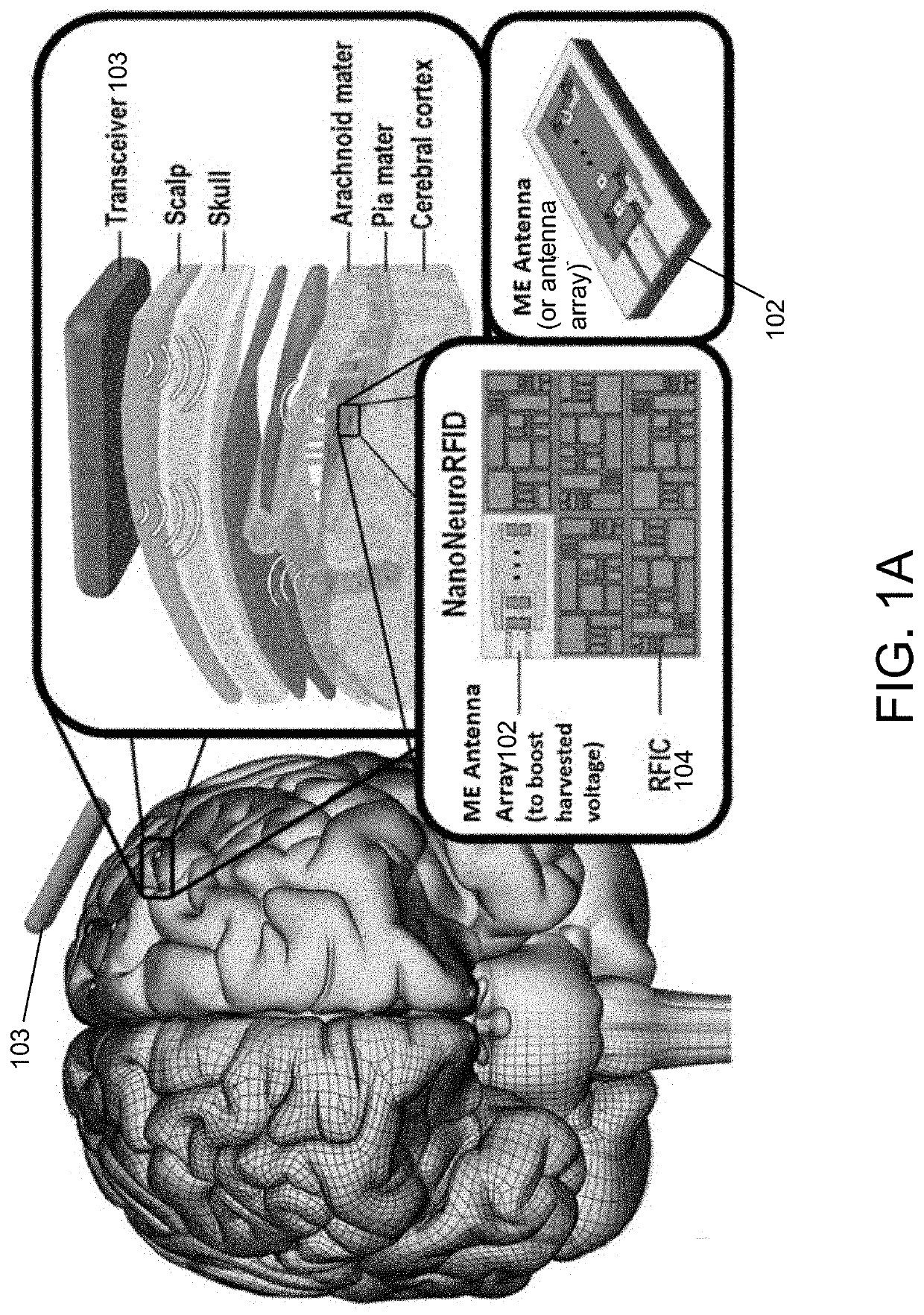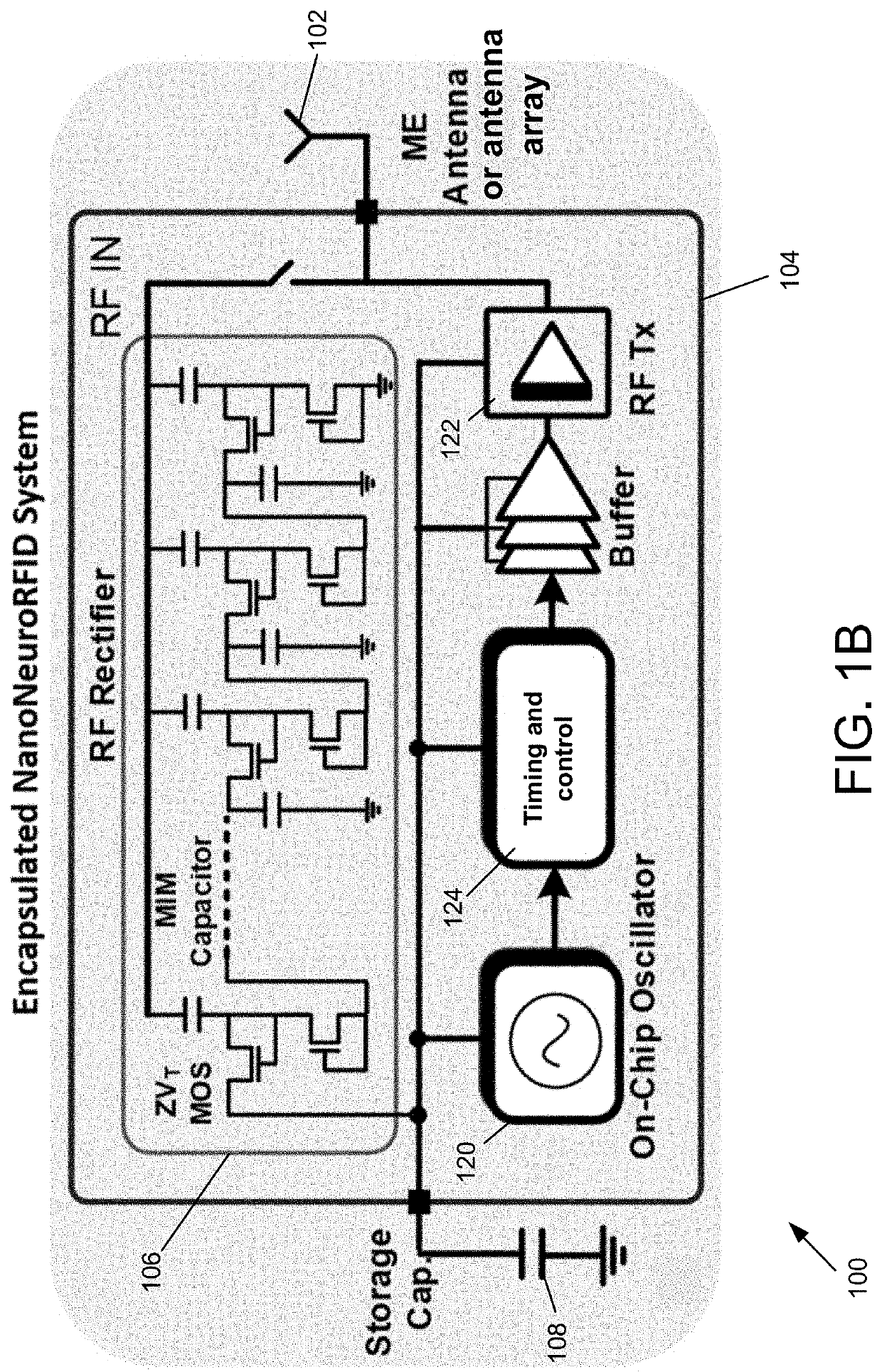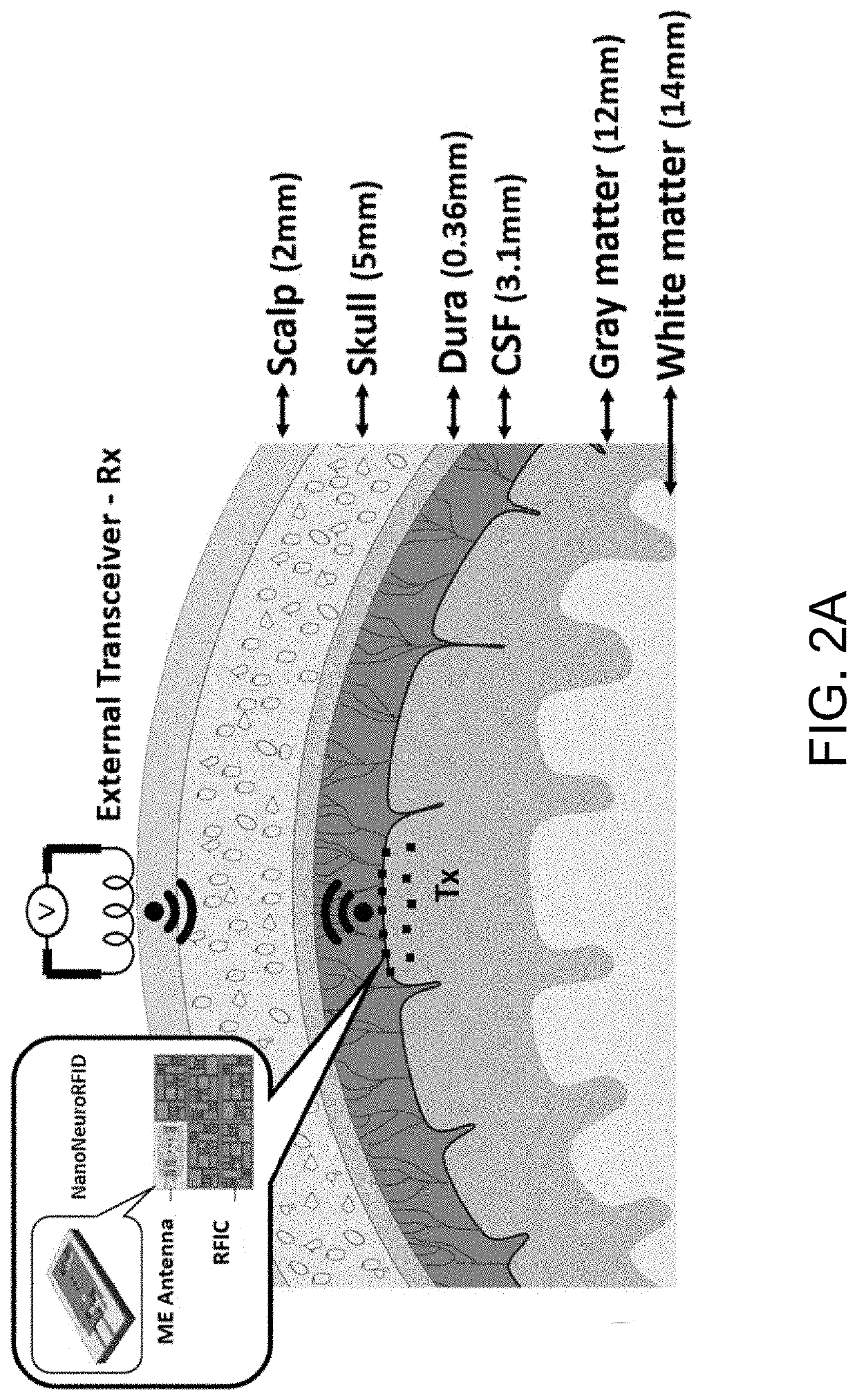Implantable Devices Based on Magnetoelectric Antenna, Energy Harvesting and Communication
a technology of magnetoelectric antenna and implantable device, applied in the field of human brain research, to achieve the effect of improving signal-to-noise ratio, reducing tissue conductivity, and improving spatial specificity for signal propagation
- Summary
- Abstract
- Description
- Claims
- Application Information
AI Technical Summary
Benefits of technology
Problems solved by technology
Method used
Image
Examples
Embodiment Construction
[0047]A description of example embodiments follows.
[0048]The teachings of all patents, published applications and references cited herein are incorporated by reference in their entirety.
[0049]Embodiments of the implantable system described herein are directed to a wireless, sub-millimeter (mm) sized, and self-powered implantable device, which may be suitable for large-scale in-vivo neural magnetic field recording. FIGS. 1A and 1B illustrate conceptual block diagram and architecture of an example embodiment of the implantable system 100.
[0050]At the core of described implantable system 100 is an ultra-compact, acoustically actuated magnetoelectric (ME) antenna 102. The ME antenna 102, which is a nanoplate resonator (NPR), is one to two orders of magnitude smaller than comparable loop antennas, and have at least a 50 dB higher antenna gain. The ME antenna 102 is sensitive to a neural magnetic signal, in that the resonance frequency of ME antenna shifts when it is in presence of a DC o...
PUM
 Login to View More
Login to View More Abstract
Description
Claims
Application Information
 Login to View More
Login to View More - R&D
- Intellectual Property
- Life Sciences
- Materials
- Tech Scout
- Unparalleled Data Quality
- Higher Quality Content
- 60% Fewer Hallucinations
Browse by: Latest US Patents, China's latest patents, Technical Efficacy Thesaurus, Application Domain, Technology Topic, Popular Technical Reports.
© 2025 PatSnap. All rights reserved.Legal|Privacy policy|Modern Slavery Act Transparency Statement|Sitemap|About US| Contact US: help@patsnap.com



